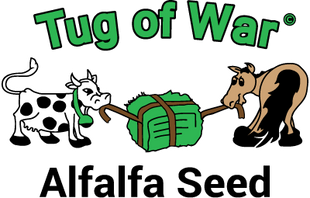Description
Get Shoshone Sainfoin for $2.49 per pound!
Sainfoin is deep-rooted and very drought-resistant, provided the annual rainfall is 12 inches or over. It yields best on deep, well-drained soils, and will not withstand wet soils or high water tables. Sainfoin does especially well on high lime soils. Sainfoin as a hay and forage crop grows taller than alfalfa, its stem is hollow and there are many leaflets.
Shoshone sainfoin was selected for its tolerance of northern root-knot nematode. It has good drought tolerance, winter hardiness, and is also resistant to alfalfa stem nematode. Shoshone is the preferred variety when sugar beets or other root crops are included in an irrigated crop rotation
Planting Depth: .25”-.75”
Planting Rates: 30-35 lbs per acre
Planting Dates: Mar-Apr, Sep-Oct
Establishment
Shoshone Sainfoin is easy to establish, provided the planting depth is no deeper than ¾-inch, and the seed is planted into a firm, weed-free seedbed. First year weed control is critical for the best stand establishment. Plant sainfoin after a cereal grain or other crop where broadleaf weed control has been obtained, but no residual herbicide activity remains. For root nodule formation and nitrogen fixation, the seed must be inoculated with sainfoin-specific Rhizobium bacteria just prior to planting. Sainfoin can be planted in the fall, but spring plantings have the best emergence.
Adaptation
Shoshone Sainfoin is adapted to much of the northern Rocky Mountains, Great Plains, and Great Basin up to elevations of 6,000 feet. It yields best on deep, well-drained soils with a pH of 7.0 to 8.0, and mean annual precipitation of 13 or more inches. It is frost and drought tolerant.
Management
Sainfoin has poor tolerance to close or frequent grazing and animal trampling. Its slow growth makes it best suited for rotational grazing systems. Irrigating sainfoin in the same manner as alfalfa will cause rapid stand decline. Sainfoin typically requires about 50% of the irrigation water needed by alfalfa. Since sainfoin is readily browsed by deer and elk, new plantings may need protective fencing in areas where large herds reside. In addition, it should not be planted next to unprotected shelterbelts because trees and shrubs may suffer collateral damage. Depending on adaptability to a given site, it may yield well for one or more production years. Sainfoin seedlings compete poorly in mixtures with tall, aggressive grasses, such as intermediate wheatgrass or smooth brome. Although total yield is usually not affected in these stands, the proportion of sainfoin rapidly decreases. It is well suited to mechanical harvesting as it grows upright and is easily cut. Since growth occurs up to full bloom, the first cutting can be taken at about the half- to full-bloom stage. Unlike alfalfa, sainfoin does not drop its lower leaves, and stems remain succulent as the plant matures. As a result, forage quality does not decrease as rapidly after the 10% bloom stage. Avoid cutting or grazing sainfoin too closely as it does not store carbohydrates. Cutting a hay crop or grazing sainfoin after dormancy is recommended. Sainfoin also has premium forage quality and palatability making it an excellent choice for pasture. Although its productive lifespan may be less than other species, grazing sainfoin in the bud or early bloom stage and keeping the grazing height above 8 inches, lengthens the productive life from two or three years to six years. Sainfoin yields more when planted with birdsfoot trefoil. Sainfoin is also adapted to dryland pastures and grows satisfactorily in mixtures with crested wheatgrass.
Description
Sainfoin has been grown in parts of Europe and Asia for over 450 years. Various strains have been introduced into North America since about 1900. These cultivars were generally low-yielding and poorly adapted to North American soils and climatic conditions. More recent introductions, however, when combined with plant-breeding efforts, have resulted in increased multi-cut forage yields, improved nodulation and nitrogen fixation, and resistance to diseases and insect pests. Sainfoin grows from a root crown on a deeply penetrating tap root early in the spring and flowers one to two weeks earlier than alfalfa, which makes it an early season flowering species for pollinator habitat plantings. The stem is hollow, reddish-brown with straight hairs, and grows to a height of about 3 feet or more. The leaves are pinnately compound with 11 to 29 leaflets. The leaflets are longer than wide and taper abruptly to small sharp points. Condensed tannins in the leaves reduce the risk of bloat in ruminant livestock and reduce nematode parasitism in sheep. The small (about 1/3-inch long), fragrant flowers are pink to lavender with reddish-purple lines, have wing petals, and are borne on a spike-like stem called a raceme. The fruit is a one-seeded pod about ¼-inch long.
Shipping
Payment & Security
Your payment information is processed securely. We do not store credit card details nor have access to your credit card information.


